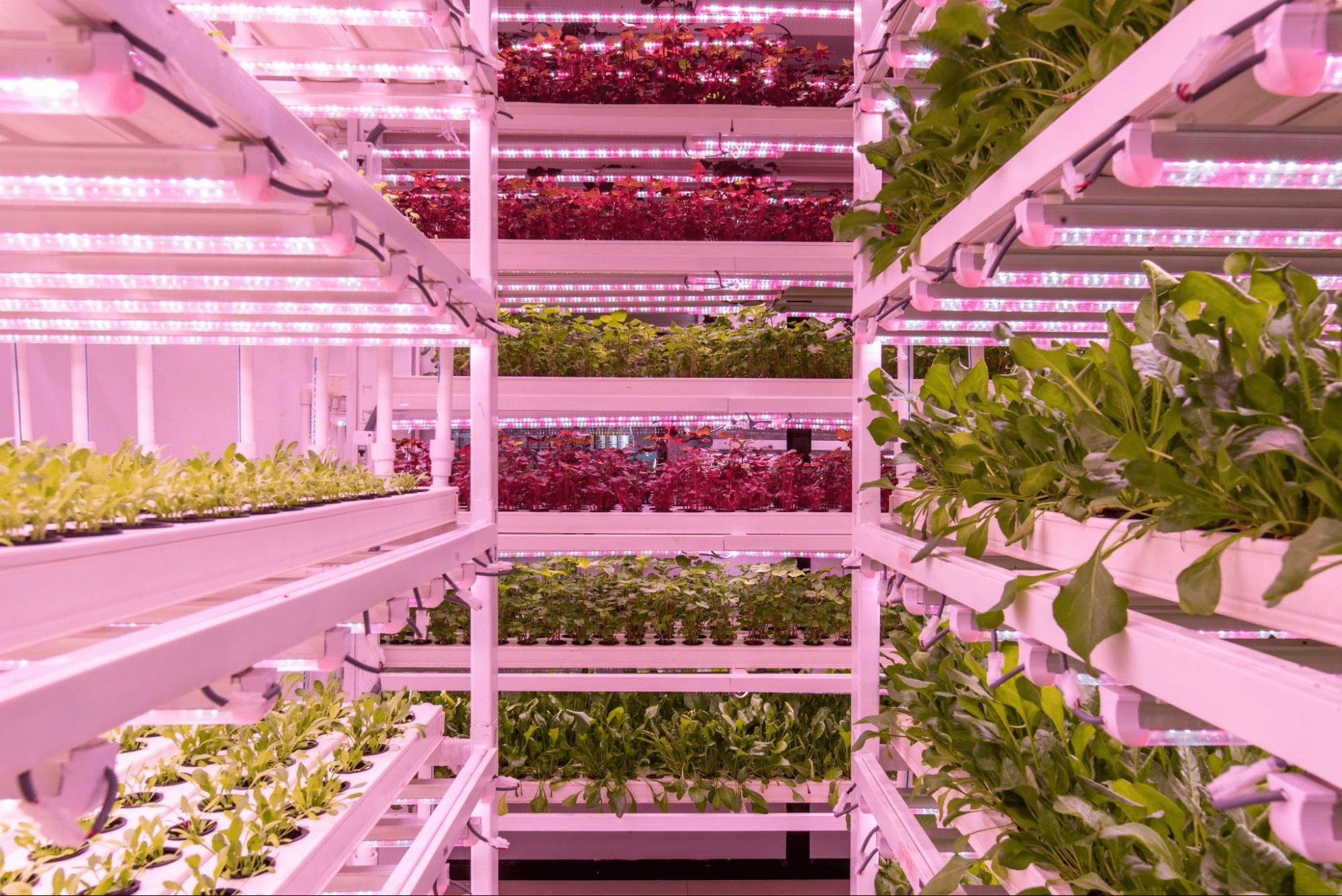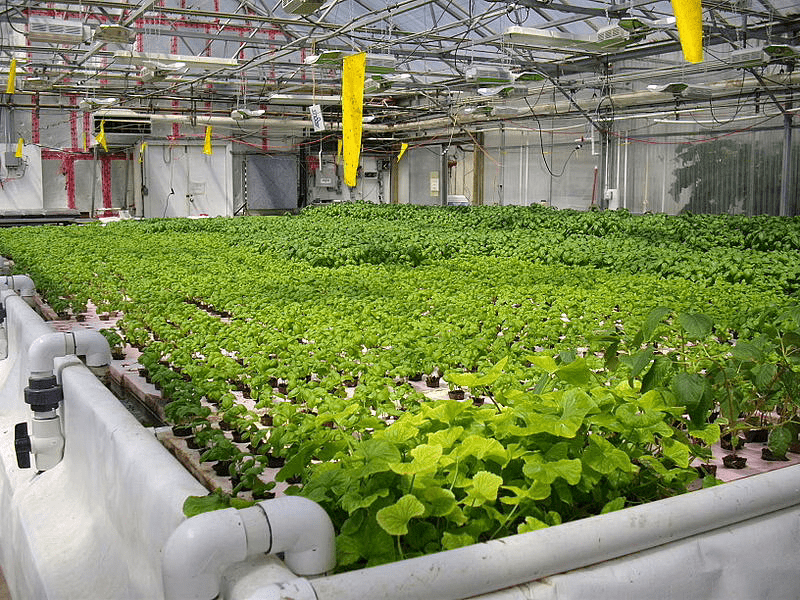Jun 1, 2022
India’s Relationship With Food Is Changing. Its Urban Agriculture Policies Need To Change With It.

BASF Venture Capital (BVC) invests in the Indian hydroponics pioneer UrbanKisaan; image sourced from BASF
Editor’s Note: One of Agritecture’s predictions for the future of agriculture in 2022 was that more cities and countries would push urban agriculture policy initiatives forward. As part of this, Agritecture will be publishing more content about the need for increased agriculture in cities globally. This is the first post of a two part series featuring information derived from Agritecture Designer’s findings, and interviews between Agritecture and the Indian CEA consultancies TruFarm Co. and Eat Neat Project.
India’s food system is faltering. Despite rapid progress towards food sovereignty being made over the past decades, traditional agricultural methods continue to be strained by the depleting availability of natural resources and extreme weather conditions.
To add to the mix, there is a dual challenge of undernourishment in some parts of the country coexisting with increasing rates of obesity in others. According to a 2021 analysis by SAGE Journals, 40% of India’s population is obese, with elevated rates in urban contexts as compared to rural populations (44% vs 36% respectively).

Image sourced from the Aquaponics In India blog
The country’s rapid economic development, evidenced by the fact that the average income per capita has quadrupled over the past four decades, has ushered in a growing middle class. With this changing social landscape comes a consumer base with new demands, and a shifting relationship with food and agriculture in India more broadly.
Researchers in this field note that with structural transformation such as a developing middle class come two stages of dietary transition: “In the first stage, economic growth and rise in per capita income induce diet diversification. Consumer preferences move away from quantity to quality, substituting traditional staples with non-staples, such as fruit, vegetables and livestock products. In the second stage, the effects of globalization of the economy are reflected in an increase in the consumption of processed food which are rich in proteins, sugars and fats.”
India is manifestly undergoing such a dietary transition. In the report cited above, researchers note a decline in consumption of grains such as rice and wheat in households across all income groups, coupled with an increased diversity in consumption of other foods like fruit, vegetables and livestock products.
This increase in demand for a variety of fresh produce exposes some deficiencies in the traditional rural agriculture model, in that “the highly seasonal supply of fruits and vegetables and lack of storage infrastructure to smoothen prices makes access to nutritious food at affordable prices a challenge for consumers.”
There is clearly a complex nexus of intersectional issues to consider when thinking about India’s developing food system.
While some policy measures have been established to tackle rising obesity rates and facilitate access to a wider array of healthy foods, such as increased taxation on fast foods in Kerala, there are concerns among experts that the government has not gone far enough in its attempts to formally address the issue of poor nutrition across the population.

Image sourced from Ori Farming News
The aforementioned report explicitly states that “current policies have not taken into account the fact that India would be more urban than rural by 2050. Most of the existing food-based policies have a greater rural presence.”
While the government recognises the necessity of harnessing India’s agricultural potential — they set a goal to double farmers’ income by 2022, from the base year 2015-16 — it is clear that a sustainable solution to these issues will require consideration of a growing urban demographic.
One promising solution which addresses many of these considerations is the implementation of more urban farming systems in Indian cities.
Entrepreneurs are delving into the potential of CEA as a solution to India’s food system challenges. Two major players in India’s emerging field of urban farming are Agritecture’s consulting partners TruFarm Co. and Eat Neat Project.
Agritecture spoke to the two consultancies to gain insight into the market, the challenges urban farmers are facing, and their thoughts on what the future holds for CEA in India.
Both companies agreed that the interest in CEA-grown produce amongst consumers in India is significant, and continuously growing. TruFarm Co. cited three main reasons for this interest:
There are more consumers who are looking for a superior quality product
CEA operations offer a profitable and sustainable business model
There is rapid growth of e-commerce in India
Eat Neat Project emphasized the appeal of the more sustainable elements of CEA produce, especially aquaponics, among young, conscious consumers. “People who are consuming this [produce], mostly youngsters, give a lot of credit for sustainability.”

Image sourced from Bryghtknyght
Another advantage of urban farming is its ability to supply rarer and more exotic produce to consumers with an increasingly diversified palette. The phenomenon of globalization has exposed Indian consumers, especially those in the middle class bracket, to a wider array of cuisines and cultures, therefore opening up the market to foods which aren’t necessarily as easily produced via traditional rural farming methods in India.
Eat Neat Project expands on this, saying that “lettuce is considered exotic, because it's not usually grown around here. And bok choy, or kale: all these foods are exotic. So, there's a growing demand in metropolitan cities for them. And most of this produce is only catered by hydroponic and aquaponic farms. If somebody wants to get into selling exotic produce, then I would say aquaponics or hydroponics is the best way.”
TruFarm Co. confirms that CEA can help to meet changing consumer demands, giving the example of fresh strawberries. “There are various popular crops, like strawberries, which are only available in India during the winter months. Being a juicy soft fruit, the demand for the same is almost three times higher in summers, but since CEA is not widely popular in India yet, the demand is barely met.” Here, the year-round consistency that is only available via CEA presents a huge market advantage.
The TruFarm Co. team also notes that, “with CEA, the product will reach the consumer faster, fresher, and with a higher nutritional value than regular market produce. In the post-pandemic era in particular, the Indian consumer also wants to be aware of the origin and the journey of the produce. Hence CEA offers a perfect solution whereby we can bring in traceability.”
In addition to this, in urban areas plagued by drought and flooding, the potential benefits of vertical farming as a reliable source of access to nutritious foods is indisputable.
There are still many challenges entrepreneurs need to overcome before CEA can be fully established as a thriving industry in India. Read part two of this series, in which we delve into these main challenges, and look at some possible solutions.


